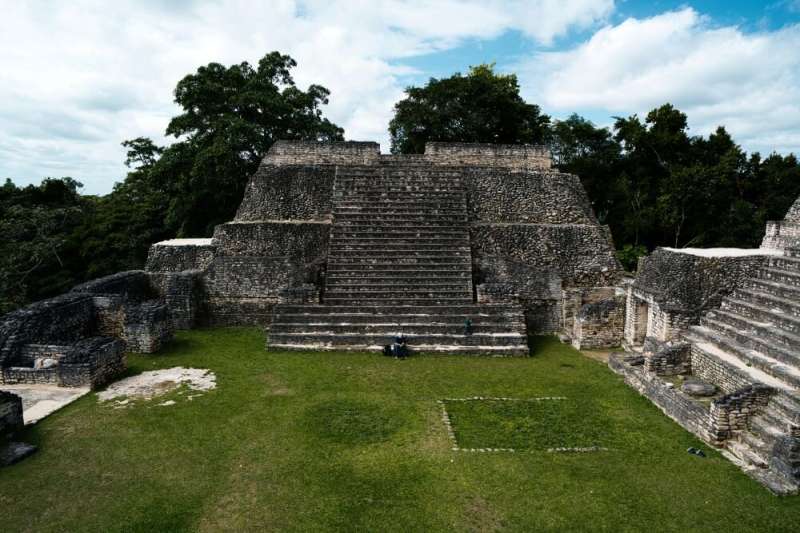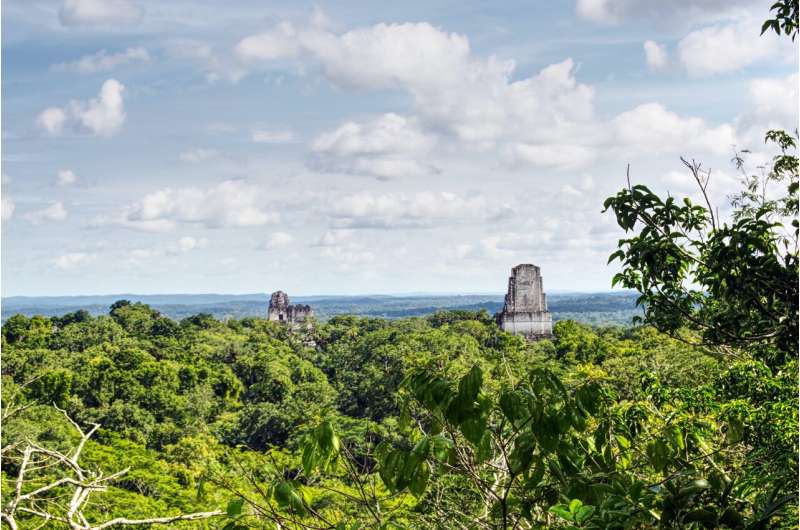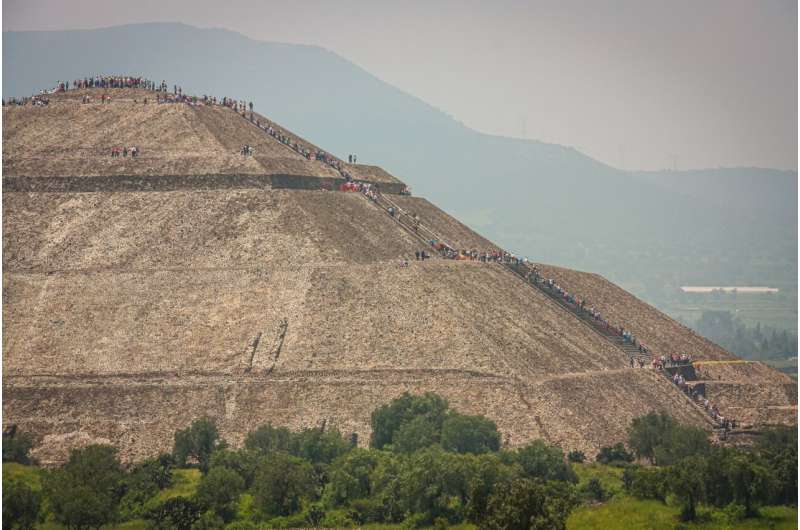This article has been reviewed according to Science X's editorial process and policies. Editors have highlighted the following attributes while ensuring the content's credibility:
fact-checked
peer-reviewed publication
trusted source
proofread
New study suggests clues to urban resiliency lie within ancient cities

Jakarta … San Francisco … Shanghai … Phoenix … Houston.
These major cities and others around the globe have many similarities, but they share one particular commonality that is concerning for residents. They are among the global cities most affected by climate change.
While each of these cities has proven resilient for centuries, urban planners, community leaders and civil engineers continue to address their many environmental challenges. In preparing for these cities' future, however, it might be more expedient to revisit the distant past for inspiration.
A recent article in the Proceedings of the National Academy of Sciences (PNAS) explores how ancient Mesoamerican civilizations fared against environmental threats and provides examples of how modern metropolises can learn from their successes.
"Mesoamerican Urbanism Revisited: Environmental Change, Adaptation, Resilience, Persistence, and Collapse" was published in the latest edition of PNAS and also is available to review on PubMed Central. Its authors include a who's who of anthropological archaeology and urbanism scholars from across the globe.
"There are some lessons to be learned from many regions within Mesoamerica," said its lead author Diane Z. Chase, University of Houston senior vice president for academic affairs and provost.
Both Diane Chase and her husband Arlen Chase (longtime archaeologists, research collaborators and spouses) are frequent visitors to the Maya archaeological site of Caracol in Belize. That region and others, she said, holds many clues to addressing some of the problems faced by today's cities.
"When that city was at its height, the city planning in and of itself was exceedingly well done," she said. "They were doing some things that we are still talking about … green cities, walkable cities."

Prehispanic Mesoamerica included areas of Mexico, Belize, Guatemala and El Salvador. In addition to Caracol, Mesoamerican cities examined within the article include Chunchucmil, Monté Alban and Teotihuacan in Mexico and Tikal in Guatemala.
These and other Mesoamerican cities prospered despite a lack of modern technologies and without basic resources such as wheeled transport or domesticated animals such as oxen, mules or donkeys to carry loads. Chase and her fellow authors maintain that despite history often depicting the fall of Maya cities, their resiliency for centuries is often overlooked.
"While the causes of the Classic lowland Maya collapse remain a subject of coalescing debate, sizeable changes in the populations of many cities occurred," Chase and co-authors stated in the article. "These changes in population have largely blinded scholars to the remarkable successes of lowland Maya cities that persisted, adapted, and flourished for many centuries and were then replaced by smaller cities that subsequently arose and flourished."
Such resiliency can be attributed to enhanced infrastructure that included roads, access to markets and agricultural terracing (or sloped planes with sections landscaped into flattened platforms for farming). Likewise, these cities supported advanced socio-economic systems that included structured governance, institutions and social norms.
Ultimately, these cities withstood a number of environmental challenges such as drought, earthquakes, heavy rains, hurricanes and rising sea levels. Many of these meteorological conditions were detected by researchers who examined stalagmites, shells and other items found within these ancient sites.
Drought has long been considered to be a factor in the demise of Mesoamerican cities. According to Arlen Chase, professor in UH's Comparative Cultural Studies Department, that is indeed a myth. He said that cities such as Teotihuacan experienced significant growth during a period of severe drought. In Caracol, the city was already largely abandoned when that area of Belize was affected by lack of rain.
"The correlation between the population sizes within these cities and the consistency of these sites doesn't have anything to do with drought," he said. "These cities actually were quite resilient."
Another myth, he said, focused on the concept of compact and dense urbanism as constituting all cities, which is largely a western concept. A form of dispersed urbanism was prevalent within Mesoamerica (and in other parts of the world) that varied from city to city. One trend observed by the Chases and their collaborators was that collective societies (or those that were largely democratic) were the most successful.

"At their peaks, most Mesoamerican cities were prosperous and sustainable, often with a form of collective governance," the authors stated within the article. "Governance, however, was fickle and was subject to shift between more collective and more autocratic systems over the course of history. Also particularly striking in terms of the abandonments of Mesoamerican cities―and opposed to earlier understandings―is that most of their collapses are associated with a rejection of these successful adaptations for strategies more focused on autocracy and inequality, in which there was only limited wealth sharing."
In determining social structures and governance within these ancient sites, the Chases and fellow researchers analyzed the bones of residents within Caracol and other sites. Chemical elements within these human remains can offer clues to a person's diet (which provides insights on where people lived or their level or wealth). Additionally, artifacts and the size of living spaces can offer insight on wealth, power and social status.
Co-author Gary M. Feinman, MacArthur Curator of Mesoamerican, Central American, and East Asian Anthropology at Chicago's Field Museum of Natural History, said there are many lessons to be learned from Mesoamerica. In facing the challenges of the future, it's essential to look to the past, he said.
He added that the PNAS article is a first step in helping clear the air regarding any misconceptions regarding the perceived failures of Mesoamerican cities and truly spotlights the resiliency of their residents.
"Part of this article is trying to correct the misbelief that the Mesoamerican cities were riddled with collapse, that rulers were purely despotic and that there was no such thing as economic growth and prosperity," Feinman said. "That's why this era is not looked at as a source of information. By clearing up some of these misbeliefs that are broadly held, we can make this information more accessible to city planners and policy makers."
Feinman believes that one of the biggest lessons to be learned from the success of Mesoamerican cities is from its residents. Those community members, who worked tirelessly to adapt to a changing environment and react to natural disasters without technology, are models for contemporary communities, he said.
"These cities speak to the great potential of human cooperation," he said. "When people share a goal, they can do amazing things."
More information: Diane Z. Chase et al, Mesoamerican urbanism revisited: Environmental change, adaptation, resilience, persistence, and collapse, Proceedings of the National Academy of Sciences (2023). DOI: 10.1073/pnas.2211558120
Journal information: Proceedings of the National Academy of Sciences
Provided by University of Houston



















